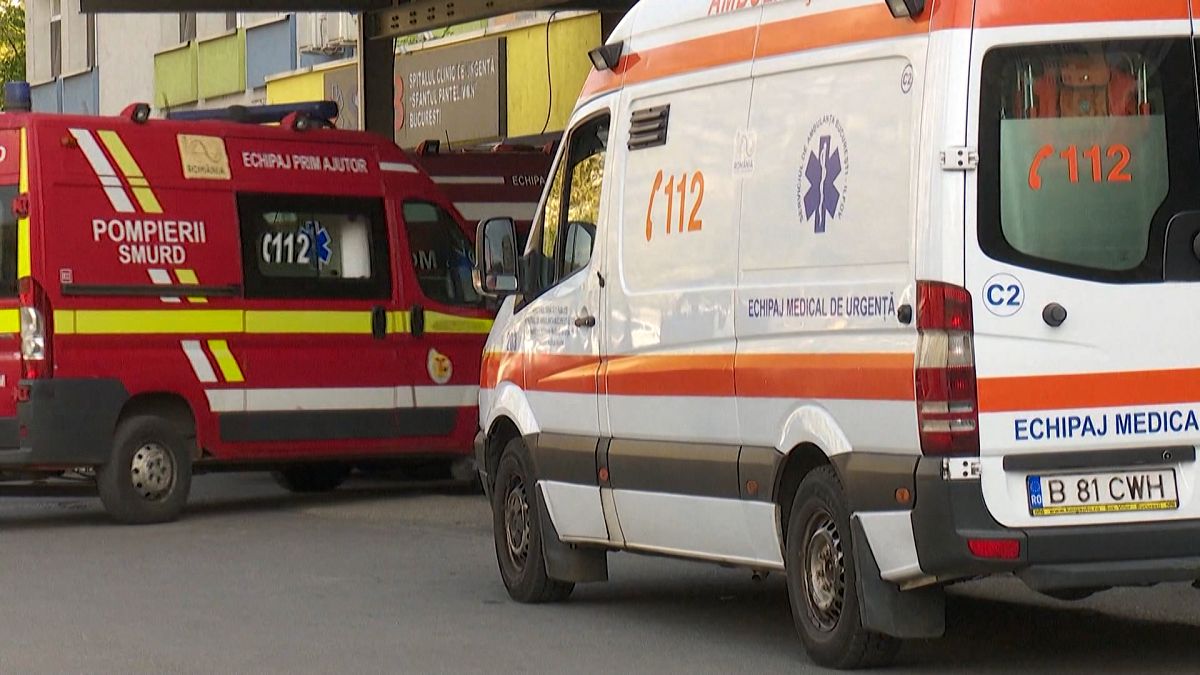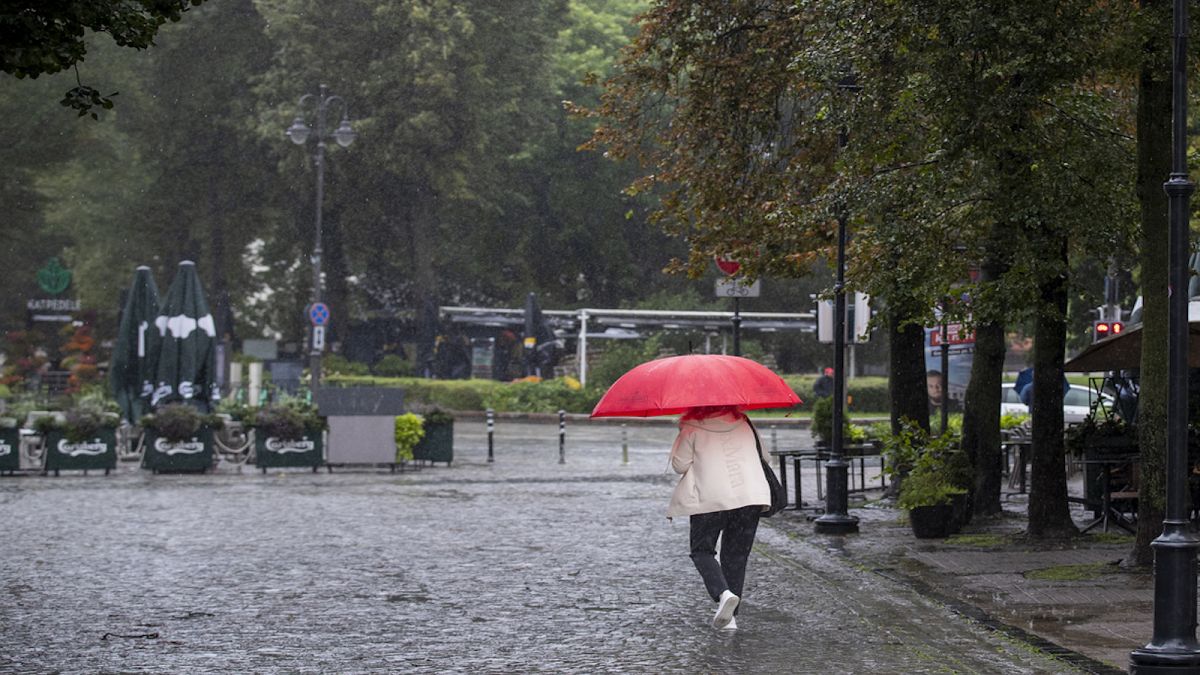World
The Toll of 10 Months of Simmering Conflict on the Israel-Lebanon Border

Source: Armed Conflict Location and Event Data Project
Even before a deadly rocket strike and a round of assassinations renewed fears of a wider war across the Mideast, the steady, simmering conflict between Israel and Hezbollah militants in Lebanon proved devastating.
For almost a year, both sides have been carefully calibrating their tit-for-tat attacks to avoid a larger conflict. But the near-daily exchanges of fire have added up.
Satellite imagery makes clear just how profound the toll has been on both sides of the border. This is what one Lebanese town, Aita al-Shaab, looked like before and after it came under attack.
Israeli forces and Hezbollah militants, who are backed by Iran, have been fighting off and on for years. But the conflict intensified last October after another Iranian ally, Hamas, led an attack on Israel from the Gaza Strip, setting off the war there.
In the cross-border fighting between Israel and Hezbollah, the most widespread structural destruction has been in Lebanon, where thousands of buildings have been damaged or destroyed. The thousands of Israeli attacks since October have far outnumbered Hezbollah attacks into Israel, according to data collected by the Armed Conflict Location and Event Data Project, a nonprofit that studies world conflicts.
Around a quarter of the structures are damaged in some villages, according to an analysis of satellite data by Corey Scher of the CUNY graduate center.
Israeli airstrikes and shelling in Lebanon have killed nearly 500 people, at least 100 of them civilians, according to the U.N. and Lebanon’s health ministry.
Hezbollah has launched 7,500 rockets, missiles and drones since the start of the war in Gaza, according to the Israeli prime minister’s office, killing 43 people in Israel, more than half of them civilians, and setting swaths of farmland ablaze. Northern Israel has seen more than 700 wildfires, according to the prime minister’s office, which Israel has blamed on the Hezbollah barrages.
This satellite imagery shows what happened to large areas of dry brush surrounding the Malkiya kibbutz after it was ignited.
Sources: Planet Labs, OpenStreetMap
It is not only Israel that is burning.
The fighting has caused significant fires on both sides of the border, and many fear they may cause long-lasting damage to land that plays an important role in food production.
Many villages near the border on both sides are ghost towns. Roughly 60,000 people in northern Israel and 100,000 in southern Lebanon have been displaced by the fighting along the border since October, with no clear timeline for returning home.
Sources: Ororatech, OpenStreetMap
Note: Fire boundaries are rough estimates of thermal activity based on satellite detections. Detections since the war began are from Oct. 7, 2023 to Aug. 6, 2024, and those before the war are from the same period a year earlier.Where fires have broken out
Now, there is fear that like the wildfires, the conflict itself may spread. In the past three weeks, attacks have escalated, threatening a larger regional war.
In July, a rocket from Lebanon killed 12 civilians in a town in the Israeli-controlled Golan Heights. It was the deadliest attack on Israeli-controlled territory since the Oct. 7 attacks led by Hamas.
Israel responded with a strike in Beirut’s southern suburbs, killing a Hezbollah leader along with five civilians, according to Lebanese authorities. A senior Hamas figure was assassinated hours later in the capital of Iran. Both Hezbollah and Iran vowed vengeance.
Lebanon’s border towns with Israel, made up mainly of Shiite Muslims, are a bastion of support for Hezbollah. But there are also Christian and Sunni Muslim enclaves.
Some of those border towns that have borne much of the destruction in the current attacks were the scene of heavy ground fighting in 2006, when Israel and Lebanon fought their last war.
A U.N. peacekeeper inspecting a house destroyed by an Israeli attack in the southern Lebanese village of Yarine.
Diego Ibarra Sánchez for The New York Times
Now, with hostilities heating up, some Israelis want their country to mount a full-scale invasion again. Others fear that an all-out response from Hezbollah could be devastating. The militants’ arsenal of sophisticated precision-guided missiles is considered capable of striking cities across Israel, along with critical infrastructure like power plants and ports.
Israeli military commanders have their own concerns. They are still prosecuting one major war — against Hamas in Gaza — and do not relish the prospect of a second. And with munitions stockpiles dwindling, it is unclear how intense a battle the military could wage in Lebanon.

World
Israel says underground Hamas weapons workshop destroyed in airstrike

Israel Defense Forces released new video on Wednesday showing troops discovering an underground workshop that it says Hamas used to manufacture weapons, and its ensuing destruction in an airstrike.
The discovery of the underground Hamas workshop came as the IDF’s 7th Brigade Combat Team carried out a weeks-long operation in the Bani Suheila area of Khan Yunis in the southern Gaza Strip, the IDF said.
The operation saw troops raid dozens of terrorist infrastructure sites and the elimination of more than 70 Hamas operatives during close-quarters combat and aerial strikes, according to the IDF.
During the operation, troops of the 603rd Battalion and the Yahalom Unit found a tunnel that went deep underground, according to officials. As the troops investigated the route, the IDF said they uncovered underground workshops and a compound with three rooms used by Hamas terrorists to store and manufacture weapons.
ISRAEL STRIKE IN LEBANON REPORTEDLY KILLS 4 HEZBOLLAH OPERATIVES AS REGION BRACES FOR POSSIBLE IRAN ATTACK
The IDF said its troops discovered a tunnel that led to an underground workshop that Hamas used to manufacture weapons. (Israel Defense Forces)
Following their investigation, the IDF said the tunnel route and workshops were destroyed in an airstrike.

The IDF said the tunnel route and workshop were destroyed in an airstrike. (Israel Defense Forces)
Tensions between Israel and Iranian proxies Hamas and Hezbollah have escalated in recent weeks as world leaders worry that the conflict could boil over into a larger regional war.

The IDF said it finished its operation in the Bani Suheila area of Khan Yunis in the southern Gaza Strip, destroying infrastructure used by Hamas. (Israel Defense Forces)
ISRAEL VOWS TO KILL NEW HAMAS POLITICAL LEADER WHO PLOTTED OCT. 7 MASSACRE
The assassination of Hamas political chief Ismail Haniyeh in Tehran last week ratcheted up tensions in the Middle East further. Israel has not publicly claimed responsibility for the killing, but Iran and Hamas are accusing the Jewish state of being behind it.
CLICK TO GET THE FOX NEWS APP
Iranian Supreme Leader Ali Khamenei has vowed to avenge the death of Haniyeh, while Israeli Prime Minister Benjamin Netanyahu has said Israel remains ready for any scenario.
World
Doctors and nurse arrested after Romanian hospital deaths

17 people died in the intensive care unit at St. Panteleimon Emergency Hospital in Bucharest over the course of four days.
Two doctors and a nurse from the St. Pantelimon Emergency Hospital in Bucharest have been arrested in connection with suspicious deaths in the ICU.
In mid-April, 17 people died within four days in the Intensive Care Unit.
The charges include aggravated murder and attempted murder in the case of the doctors, and perjury for the nurse who is involved in the investigation.
Prosecutors have alleged that the crime was premeditated, indicating that the doctors conspired to abruptly reduce the dose of noradrenaline in patients causing cardio-respiratory arrest.
According to one prosecutor, “One of the defendants voluntarily reduced the dose of norepinephrine to a patient who was in a quite serious condition”.
The three doctors and the nurse faced intense questioning for hours by homicide detectives and prosecutors.
The nurse involved allegedly lied to investigators despite being heard three times in the case as a witness.
Nearly four months after the scandal erupted and after three parallel investigations, including one by the control body that revealed communication issues, Health Minister Alexandru Rafila has called for the hospital’s management to resign.
Romanian Prime Minister Marcel Ciolacu expressed that “The important thing is that we uncover these things. Let those who do this go to jail”.
The investigation began in April after an ICU nurse alleged that 17 people, aged between 42 and 92, had died.
Romania’s Prime Minister Marcel Ciolacu said the perpetrators of the crime should face jail if found guilty.
World
General Hospital Promotes Chris Van Etten to Co-Head Writer

ad
-

 Mississippi1 week ago
Mississippi1 week agoMSU, Mississippi Academy of Sciences host summer symposium, USDA’s Tucker honored with Presidential Award
-

 News1 week ago
News1 week agoU.S. men's gymnastics team breaks 16-year Olympic drought with a team bronze
-

 World1 week ago
World1 week agoOne person dead as heavy storms hit Baltic states
-

 World1 week ago
World1 week agoThe Take: The aftermath of Venezuela’s contested election results
-

 News1 week ago
News1 week agoGovs. Shapiro, Whitmer stump for Harris in Montgomery County
-

 World1 week ago
World1 week agoWhy are fewer women winning EU leadership roles?
-

 Movie Reviews1 week ago
Movie Reviews1 week agoStream It Or Skip It: ‘Abigail’ on Peacock, a delightfully gory vampire horror-comedy
-

 Movie Reviews1 week ago
Movie Reviews1 week agoMovie Review: ‘Deadpool & Wolverine’ | Recent News














